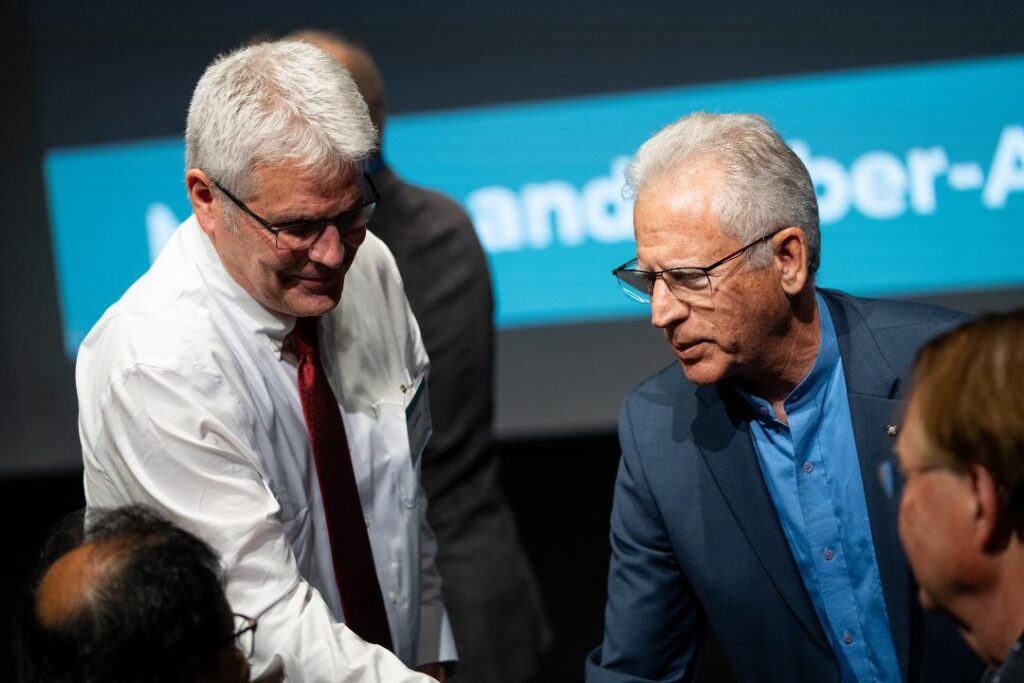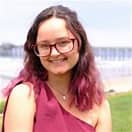
By Phoebe Skok

LA JOLLA, California — Distinguished Professor Thomas E. Levy’s 40-year-plus career has been shaped by what he calls archaeo-diplomacy: using archaeology as a tool to build bridges between international research teams, foster connection and cooperation and safeguard cultural heritage and history. A prime example? The new Jacobs UC San Diego – University of Haifa Marine and Cyber-Archaeology Project.
Originally launched in 2020 with a $1.3 million award from the Koret Foundation, the project studies climate and environmental change on Israel’s Mediterranean coast over the last 10,000 years through cyber- and marine archaeology. This year, generous funding from Irwin Jacobs, co-founder and former chairman of Qualcomm, Inc. and former UC San Diego professor of applied electrophysics, will enable the partnership to expand and thrive through 2027.A recent event hosted by UC San Diego’s Qualcomm Institute (QI) and its Center for Cyber-Archaeology and Sustainability (CCAS) honored the initiative’s successful collaboration and marked the first six months of the project’s second phase. The live-streamed event brought together researchers and community members to experience demonstrations of the latest technologies used in cyber-archaeology, see research presentations with findings from the project and exchange ideas.
Almost 200 attendees came from around San Diego and the world to celebrate the partnership, including Jacobs, UC San Diego Chancellor Pradeep Khosla, University of Haifa President Gur Alroey, QI Director Ramesh Rao, University of Haifa marine and geo-archaeologist David Friesem, and Susan Lapidus, Director of the Murray Galinson San Diego – Israel Initiative (MGSDII).
“The collaboration between UC San Diego’s Qualcomm Institute Center for Cyber-Archaeology and Sustainability and the University of Haifa is one wonderful example of what we can achieve together through our collaborative research,” said Alroey at the event, noting that the recently opened Irwin M. Jacobs Cyber-archaeology Lab on the Haifa campus is the “next step.”
Alroey noted later that the University of Haifa is also working with CCAS to create the National Center for Marine Archaeology, a project endorsed by Israel’s President Isaac Herzog because of its transformative potential to foster research, cultural heritage, tourism and friendship between Israel and its neighbors.
“Through the building of these scientific bridges, we can create firm, unbreakable ties that will bond us together,” he added.
Through the research partnership, Levy, who is the inaugural holder of the Norma Kershaw Chair in the Archaeology of Ancient Israel and Neighboring Lands in the UC San Diego Department of Anthropology, and his team are working with University of Haifa’s Leon Recanati Institute for Maritime Studies (RIMS).
RIMS is situated on Israel’s Carmel Coast, which is an archaeological hotspot in the eastern Mediterranean known for its wealth of submerged heritage sites. And, its climatic characteristics and 4,000-year-old history make it a key place to study the intersection of environmental and cultural change.
Currently, the project focuses on the maritime archaeological site of Tel Dor, which sits nestled between three bays and a lagoon. The region has been continuously occupied since the Neolithic Age, or about 8,000 years ago; Levy noted that the site served as a safe haven and anchorage site for ancient communities like the Canaanites, Israelites, Byzantines and Phoenicians. A wealth of sunken ships and cargo awaits, ready to be unearthed. Thanks to the MGSDII partnership, UC San Diego students will be able to participate in a marine and coastal archaeology field school near Tel Dor later this year.
Still, underwater archaeology is tricky; communication and documentation is challenging and objects can be fragile and difficult to reach or view. And, it can be hard to survey marine sites while conserving them in their present states. That’s where technology — or the “cyber” part of cyber-archaeology — comes in.
“Cyber-archaeology is the marriage of archaeology, computer science, engineering and the natural sciences that takes advantage of the information technology revolution,” explained Levy, who is also a member of the board of directors at American Friends of University of Haifa.
Qualcomm Institute Associate Research Scientist Neil Smith helped develop many of those techniques; a computational research scientist, he co-directs the CCAS with Levy, who was his graduate advisor during his time as a doctoral student in anthropology at UC San Diego. One such technique? Underwater photogrammetry, which stitches together hundreds of photos to form movable 3D images.This type of rapid photo capture can quickly produce digital models of delicate underwater sites or massive archaeological digs; said reproductions — sometimes called digital twins — can be manipulated and viewed from anywhere in the world.
“Our goal with the center is to preserve at-risk cultural heritage,” Smith explained. “Now, we’re starting to move into this realm of ‘How do we allow people to understand and learn about the archaeology that we’ve had the privilege to see with our own eyes?’”
He hopes that virtual reality (VR) and augmented reality (AR) could be one way to do so.
Smith directs the Immersive Visualization Center at UC San Diego, which develops VR and AR technologies for mainstream and academic uses — including archaeology. Through projects like the digital artifact library called the Cyber-Archeology Warehouse, Smith is pushing to bring digitization and gamification to the forefront of archeological methods.
“My vision for cyber-archaeology over the next several years is that it’ll become a methodology and an approach to archaeology that becomes universally adopted by all archaeologists,” he said. “We’ll get to the point where we drop the word ‘cyber’ from the front and those methods become what archaeology really is.”
And, as Levy pointed out, “Today, the drivers of cyber-archaeology are the historical and anthropological questions we seek to answer. As the Eastern Mediterranean and Israel’s Carmel coast are on the land bridge between Africa and Asia, the region is one of the richest places in the world to investigate these unique connections from remote prehistory to the recent past.”
This story was initially published by UC San Diego Today.